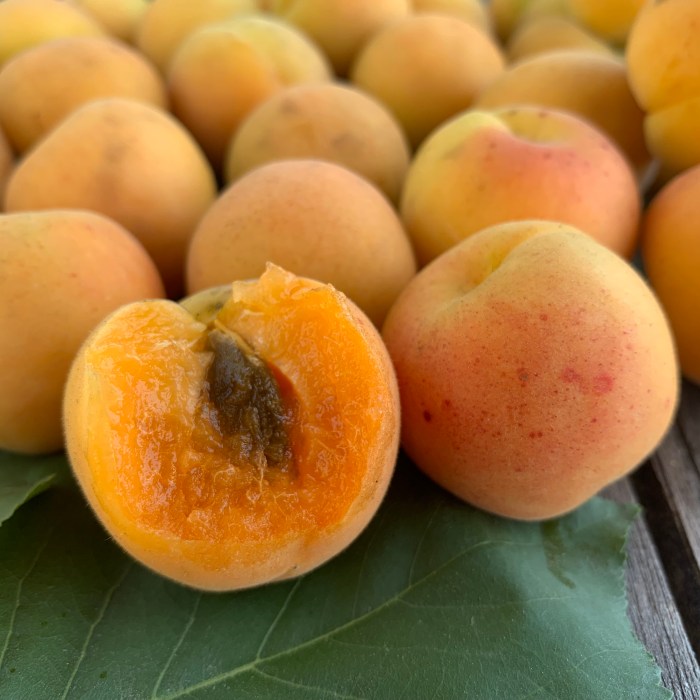Apricot Trees
Showing all 5 results
-
Flavor King Pluot Tree For Sale
The Flavor King Pluot is a truly exceptional fruit, born from the perfect union of plum and apricot. With its smooth skin ranging in vibrant hues from deep purple to dark red, it presents an alluring sight during Summer. W... -
Flavor Queen Pluot Tree
The Flavor Queen Pluot is a very delicious hybrid of plum and apricot. These pluot fruits have green skin with a yellowish green flesh. It is very juicy and have an amazingly tasty flavor. Flavor Queen Pluot trees require ... -
Katy Apricot Tree
The Katy Apricot Tree has small to medium-sized apricots and white flowers. The taste is sweet and tangy good for canning, baking, or pruning. The fruit ripens early to mid-summer.
-
Royal Blenheim Apricot Tree
Prunus armeniaca 'Royal Blenheim'The Royal Blenheim Apricot Tree is a popular variety with medium-sized, golden orange apricots. The flesh is juicy and the taste is sweet. Perfect for baking and preserving.
-
Royal Rosa Apricot Tree
Prunus armeniaca 'Royal Rosa' The Royal Rosa Apricot has small to medium-sized fruit with orange skin with a red blush and white blossoms. The fruit is sweet and tart. At younger ages, they produce more fruit than othe...
Although Apricot trees are native to Armenia, there are many great varieties growing in the United States. However, in Southern California, there are only a few low chill types of Apricot trees that will produce fruits. The most popular Apricot tree in Los Angeles is the Royal Blenheim because their sweet juicy delicious and very consistent flavor.
An Apricot tree is a woody deciduous fruit tree. An Apricot fruit is a drupe, similar to a peach, but about 2″ in diameter. The skin is yellow to orange color, and usually blushed with red tinge on the side facing the sun. The surface of the skin can be smooth, or almost like velvet. The flesh of popular varieties such as Blenheim is sweet and juicy with a pleasant flavor. Apricots have a single seed is called a stone, an encasement in a shell that is hard with a grainy and smooth texture surface. An apricot tree blooms white flowers in the Spring, and the fruit is ripe in the Summer. Eat an apricot fresh, dried, used in cooking, medicine, and deserts. Apricots are a healthy snack that is low calorie and high in vitamins, fiber, and antioxidants.
Growing The Apricot Tree
Trees can be kept small, 10-25 ft tall with a full and wide canopy. deciduous trees that grow to a moderate size. Trees are self-fruitful, aromatic, and produce white to pink Spring blossoms.
Grow Apricot trees in the full sun and well soils that drain well. Water once to twice a week in the Spring to Summer until trees establish. Reduce frequency in the Fall as the tree loses its leaves. Prune Trees and Provide little to no supplemental water in the Winter while the trees are dormant. Use organic winter dormant sprays, horticultural, and fungicides to manage pests. Thin in the summer to manage size, form, and plant energy. Summer thinning is important but Winter is when the majority of pruning should occur.
In Southern California, Low Chill Apricot Trees such as Blenheim, Royal, and Tropic Gold grow well and produce lots of fruit in mild winter climates like Los Angeles. They also do well in other areas of Southern California such as Orange County and San Diego. Grow your own Apricots in the San Fernando Valley, Pasadena, Burbank, Encino, Tarzana, Sherman Oaks, Hollywood, Beverly Hills, Santa Monica, Malibu, Long Beach down to Anaheim, Newport, Laguna Beach. These will produce fruit in all other areas of the US above Hardiness Zone 6.







